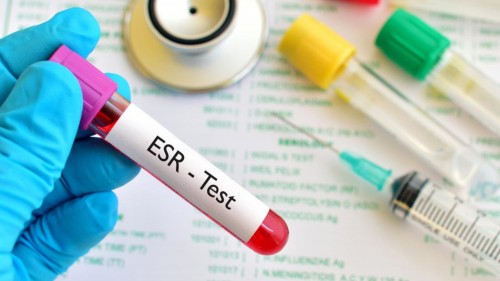Pemeriksaan laju endap darah (LED) merupakan salah satu tes laboratorium yang penting untuk mendeteksi adanya proses peradangan atau infeksi dalam tubuh. Seasight Tabung Laju Endap Darah (LED) 0-150mm dirancang khusus untuk mempermudah dan meningkatkan akurasi proses pengukuran LED. Dengan material berkualitas tinggi, desain ergonomis, dan kalibrasi presisi, tabung ini membantu menghasilkan hasil pemeriksaan yang konsisten dan dapat diandalkan. Teknologi dan kualitas produksi yang terstandar menjadikan Seasight Tabung Laju Endap Darah (LED) 0-150mm sebagai pilihan tepat untuk laboratorium modern yang mengutamakan efisiensi dan akurasi.
LED adalah uji laboratorium sederhana yang mengukur seberapa cepat eritrosit (sel darah merah) mengendap di dasar tabung berisi antikoagulan selama periode waktu tertentu, biasanya 1 jam. Semakin tinggi angka LED, semakin besar kemungkinan adanya proses inflamasi dalam tubuh.
Pengukuran LED umumnya dilakukan dengan metode Westergren, di mana darah pasien dimasukkan ke dalam tabung khusus yang mengandung natrium sitrat sebagai antikoagulan. Selanjutnya, laju pengendapan eritrosit diukur dalam milimeter per jam (mm/jam). Proses ini dipengaruhi oleh interaksi antara protein plasma (fibrinogen, imunoglobulin) dan permukaan eritrosit.
Pemeriksaan LED direkomendasikan untuk:
- Mendeteksi adanya peradangan kronis atau akut.
- Memantau aktivitas penyakit autoimun seperti lupus atau rheumatoid arthritis.
- Mengamati respons terapi pada penyakit infeksi atau inflamasi.
- Menilai kemungkinan adanya kanker tertentu
1. Faktor yang Memengaruhi Nilai LED
- Usia dan jenis kelamin (wanita umumnya memiliki nilai LED sedikit lebih tinggi).
- Kehamilan (LED cenderung meningkat).
- Anemia (dapat meningkatkan LED).
- Polisitemia (dapat menurunkan LED).
- Kondisi teknis pengambilan dan pemeriksaan sampel.
2. Keunggulan Tabung Laju Endap Darah SeaSight
- Terbuat dari material Polypropylene USP VI, ringan, dan tahan pecah.
- Mematuhi standar industri tertinggi yang ditetapkan oleh ICSH dan CLSI, memastikan konsistensi dan kredibilitas dalam pemeriksaan LED..
- Skala pembacaan Jelas dari 0-150 mm
- Lebih hemat biaya
- Masa kedaluwarsa panjang selama 2 tahun
Laju Endap Darah adalah pemeriksaan laboratorium penting untuk mendeteksi dan memantau proses inflamasi dalam tubuh. Meskipun tidak spesifik untuk penyakit tertentu, LED memberikan gambaran umum tentang kondisi kesehatan pasien. Pemilihan peralatan pemeriksaan yang tepat, seperti Seasight Tabung Laju Endap Darah (LED) 0-150mm, sangat berpengaruh pada keakuratan dan keamanan hasil. Dengan keunggulan dari segi akurasi, keamanan, dan kemudahan penggunaan, Seasight Tabung Laju Endap Darah (LED) 0-150mm menjadi pilihan tepat bagi laboratorium yang mengutamakan kualitas pelayanan.
Daftar Pustaka
- Dacie, J. V., & Lewis, S. M. (2016). Practical Haematology. 12th ed. Elsevier Health Sciences.
- International Council for Standardization in Haematology (ICSH). (2017). Recommendations for Measurement of Erythrocyte Sedimentation Rate (ESR). American Journal of Clinical Pathology, 148(1), 1–9.
- World Health Organization. (2020). WHO Guidelines on Drawing Blood: Best Practices in Phlebotomy. Geneva: WHO Press.




